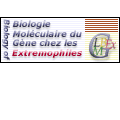
|
|















|
International Summer School
From Genome to Life:
Structural, Functional and Evolutionary approaches
BAUMEISTER Wolfgang |
|
Max Planck Institut of Biochemistry - Structural Biology Division -, Am Klopferspitz 18 a -, D-82152, Martinsried, Germany title: Electron Tomography: Towards Visualizing Supramolecular Architecture Inside Cells It has long been a dream of cell biologists to catch a glimpse of the molecular architecture inside living cells, so far largely an uncharted territory. In addition to relatively robust molecular machines, these are undoubtedly many ensembles of macromolecules which jointly perform vital functions, but are held together by forces too weak to withstand conventional biochemical isolation and purification procedures. Electron tomography is the most general method for obtaining 3-D information by EM. It can be applied to large pleiomorphic structures embedded in vitreous ice, i.e. without chemical fixation or staining. Essentially, it provides a 3-D image of the cell’s entire proteome. The development of automated electron tomography has made it possible to obtain 3-D reconstructions of whole ice-imbedded cells or organelles with resolutions in the range of 6 to 8 nm and with advanced instrumentation we are now entering the realm of molecular resolution (2 to 4 nm). In spite of the inevitably low signal-to-noise ratio of the tomograms, it is possible to detect and identify macromolecular complexes by virtue of their structural signature, provided that high-to-medium resolution structures of the molecules under scrutiny are available to be used as templates in searching the reconstructed volumes. The search can, of course, be performed with multiple templates, allowing not only the mapping of territorial distributions, but also revealing spatial relationships in functional "neighborhoods", thus bridging the gap between molecular and cellular structural biology. |